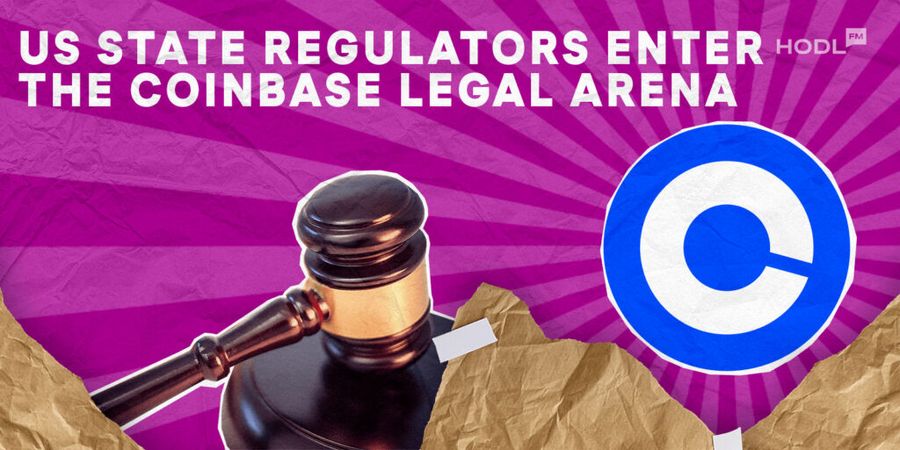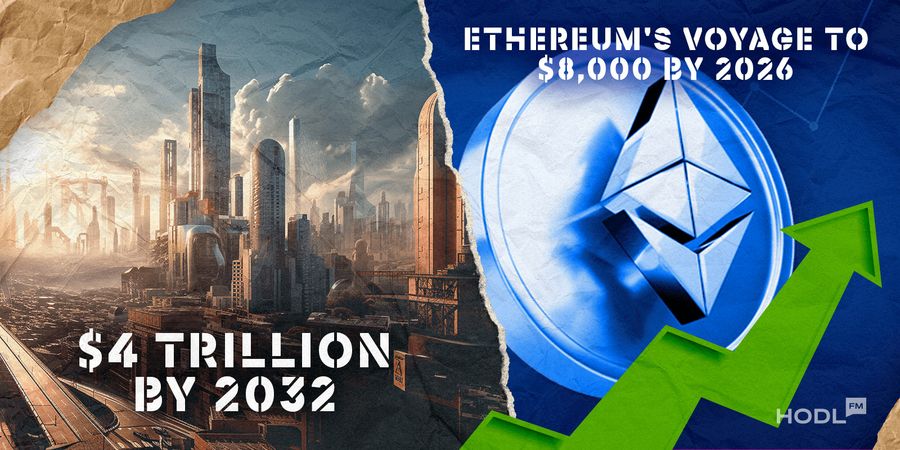The past week hasn’t left us without dramatic events in the field of blockchain, crypto, and all those related things. We’re talking metaverse mayhem, Ethereum’s Ether going on prolonged bull mode, JPMorgan cozying up to blockchain to speed up financial transactions, and wild legal disputes starring Coinbase. These tales have been rocking the headlines. Let’s dive into a quick recap of this week’s crypto chronicles.
The Metaverse market potential will reach $4 trillion by 2032
You don’t have to believe me, but someone whispered the metaverse market is on an epic journey, aiming to an astonishing $4 trillion destination by 2032. Acumen Research and Consulting has backed its predictions with the enthusiasm of people on both sides of the globe, especially our friends in America and Asia, who are diving headfirst into this brave new world.
In the midst of this metaverse mayhem, we’ve got several powerful players who have taken center stage. ByteDance, the masterminds behind TikTok, are all set to conquer the Asian frontier. Meanwhile, on the Western front, we’ve got Meta Platforms (formerly Facebook) and Microsoft — leading the charge in this realm of innovation.
But, of course, this ride to a $4 trillion metaverse isn’t without its share of challenges. Privacy worries, making all these platforms talk to each other, and weaving blockchain into the metaverse’s economy are like hurdles in this digital way. Every company in the game has its unique strengths and talents, and they’re tackling these hurdles in their own way.
As the metaverse evolves, the moves and tech innovations made by top players like Apple and the metaplatforms are going to be the compass guiding this digital expedition. With a jaw-dropping $4 trillion in the treasure chest, the metaverse promises to be the captain steering the ship of digital experiences in the years to come.
Bullish Forecast: Ethereum’s Voyage to $8,000 by 2026
Still thrilled with the potential of the Metaverse market? Wait a minute, we have prepared another exciting price forecast. Geoff Kendrick, the chief of currency research at Standard Chartered Bank is feeling pretty optimistic about Ethereum’s very own token. The ETH’s price could rise to an impressive $8,000 by the end of 2026, a far cry from its current value, just shy of $1,600.
Short-Term Dreams: If you’re looking for a sooner thrill, Kendrick points out that the Bitcoin (BTC) halving scheduled for April 2024 could give a boost to the entire crypto market. The midterm forecast sets Ether’s price at $4,000 by the end of 2024.
Long-Term Ambitions: The long-term valuation paints a picture of Ether soaring to the stars, anywhere from $26,000 to $35,000. This is a grand vision of the cryptocurrency’s potential, showcasing Ethereum’s mighty role in the world of blockchain and digital assets.
So, what’s fueling this optimism? It’s all about Ethereum’s expanding presence in gaming and tokenization. While Ethereum has been dancing to the tune of non-fungible tokens (NFTs) and decentralized finance (DeFi), there’s a noticeable shift toward gaming and tokenization, so this trend will create a storm of demand for the Ethereum ecosystem.
Related news: Ethereum (ETH) Price Prediction 2023 – 2024: Smart Contracts, Liquidity Staking Tokens and Post-ETFs Era
Of course, the road to these valuations is a winding one, influenced by market sentiments and widespread adoption. But as Ethereum keeps evolving and the world’s fascination with blockchain technology and digital assets deepens, the horizon looks promising. Stick with us as we keep a watchful eye on Ethereum’s journey to $8,000 and beyond, alongside investors, crypto enthusiasts, and financial wizards.
JPMorgan’s Blockchain Breakthrough: Transforming Collateral Settlements
In a significant step for the entire financial world, JPMorgan Chase & Co. has achieved a significant milestone by successfully conducting collateral settlements using blockchain technology. Through its Tokenized Collateral Network (TCN), the bank digitized BlackRock shares, making them tradable tokens for derivatives transactions with Barclays. This bold move symbolizes a broader shift that’s underway in traditional finance, all thanks to the adoption of blockchain.

Blockchain technology, particularly in collateral settlements, brings many advantages. Chief among them is the speed of transactions. In this instance, the collateral transfer happened almost instantly, a far cry from the traditional settlement process, which can drag on for an entire day. This newfound efficiency is a game-changer, slashing operational friction in the financial sector and simplifying intricate transactions.
Read also: The Use of Blockchain Technology in Space
The Heart of the Revolution: Tokenized Collateral Network (TCN)
At the epicenter of this transformation is JPMorgan’s Tokenized Collateral Network (TCN). By allowing real assets like BlackRock shares to transform into digital tokens, TCN provides a flexible and efficient method for collateral settlements. This is a pivotal moment, where digital assets begin to emerge as the future of financial transactions.
JPM Coin’s Potential
The potential of JPM Coin is designed for wholesale customers to facilitate payments in dollars and euros. Since its inception, the system has processed a jaw-dropping $300 billion, indicating incredible growth potential.
With JPM Coin and the Tokenized Collateral Network (TCN) leading the charge, JPMorgan’s success in this arena is just one shining example of how blockchain is reshaping the financial landscape for the better. It underscores blockchain’s potential to revolutionize traditional financial dealings.
US State Regulators Enter the Coinbase Legal Arena

The courtroom clash between Coinbase and US state authorities, alongside the Securities and Exchange Commission (SEC), has taken an intriguing twist with the involvement of additional parties. Enter government regulators and legal scholars, making their voices heard in this high-stakes legal bout. The core of the dispute? The allegation that Coinbase was running an unregistered exchange, a charge that could redefine how cryptocurrencies are treated in the eyes of the law.
Amicus Briefs Enter the Ring
The appearance of amicus briefs from both US government agencies and legal experts is making this legal showdown even more intricate. These briefs let folks who aren’t part of the main event chime in and give their two cents to the court. In this case, they’re backing up the SEC’s perspective, supporting the idea that cryptocurrencies aren’t all that special or revolutionary to deserve an exemption from the current financial rules.
The argument put forth in these amicus briefs is that the SEC already possesses the authority to regulate digital assets under existing securities laws. This suggests that the novel nature of cryptocurrencies doesn’t excuse them from the established legal frameworks meant to safeguard investors and preserve market integrity.
The fact that government regulators and legal experts are getting involved highlights that more people are realizing the importance of creating rules that acknowledge cryptocurrencies’ distinct features. It’s becoming clear that this legal showdown might set an example for how countries worldwide handle the regulation of digital assets.
Conclusion
In short, last week brought us some more game-changing news. From a potential $4 trillion metaverse market and the success of JPMorgan’s blockchain to Ethereum’s $8000 bullish projection. It’s clear that we only see a positive direction ahead for both the crypto and blockchain industries.
At the same time Coinbase’s legal battle with U.S. state regulators could change crypto regulation and determine the legal future of digital finance. We’re all looking forward to this resolution. Until then, stay in touch and keep an eye on the blockchain horizon!




